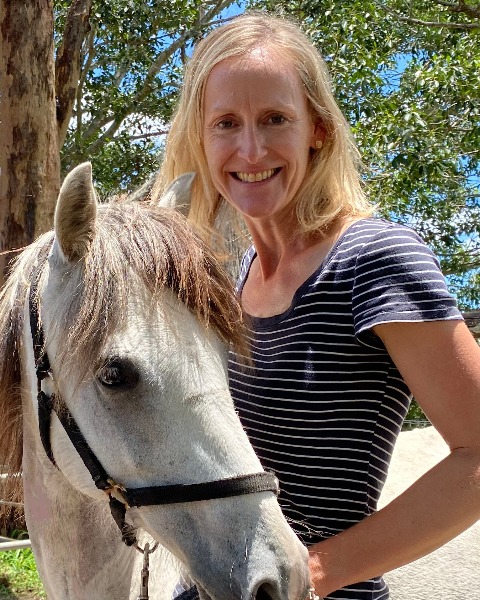Equine
Category: Research Abstract - ePoster
(E16) Glucagon-like peptide-1 Is Produced by the Equine Large Intestine in vitro
Thursday, June 15, 2023
6:25 PM - 6:40 PM ET
Location: Solutions Center Poster Park - Kiosk 7

Melody A. de Laat, BVSc, PhD, MANZCVS, GCAP, SFHEA
Associate Professor
Queensland University of Technology
Brisbane, Queensland, Australia
Research Abstract – ePoster Presenter(s)
Abstract: Hypothesis/objectives - Glucagon-like peptide-1 (GLP-1; encoded by the gene GCG) released from intestinal L-cells increases post-prandial insulin release. GLP-1 secretion has been examined in equine small intestine, but in other species L-cells are mainly located in the large intestine. The aim of this study was to determine large intestinal GLP-1 release in vitro. A second aim was to compare the sequence of GCG between healthy and insulin-dysregulated horses.
Animals - Tissue samples were sourced post-mortem from 10 horses at an abattoir. Genomic DNA was collected from 33 horses of varying metabolic status. Sample use was approved by an ethics committee.
Methods - Duplicate sections of cecum, ascending and descending colon were rinsed and placed in ice-cold phosphate-buffered saline prior to sectioning. Tissues were incubated for 60 min at 37°C in 1 mL Tyrode’s buffer with Diprotin and 12mM glucose. GLP-1 secretion was normalised to protein content and compared with one-way, repeated-measures ANOVA. Hybridised capture was used to generate a sequence for the exons of GCG in healthy and insulin-dysregulated horses and aligned against the reference genome.
Results - More GLP-1 was secreted from the ascending (66.7 ± 23.7 pM/mg; P = 0.01) and descending (62.9 ± 12.6 pM/mg; P = 0.006) colon, compared to cecum (9.59 ± 3.75 pM/mg). Sequences for GCG had 100% pairwise identity.
Conclusions and clinical importance - Functional L-cells are present in equine large intestine, although their importance is unknown. No variations associated with metabolic status were identified in the coding region of equine GCG.
Animals - Tissue samples were sourced post-mortem from 10 horses at an abattoir. Genomic DNA was collected from 33 horses of varying metabolic status. Sample use was approved by an ethics committee.
Methods - Duplicate sections of cecum, ascending and descending colon were rinsed and placed in ice-cold phosphate-buffered saline prior to sectioning. Tissues were incubated for 60 min at 37°C in 1 mL Tyrode’s buffer with Diprotin and 12mM glucose. GLP-1 secretion was normalised to protein content and compared with one-way, repeated-measures ANOVA. Hybridised capture was used to generate a sequence for the exons of GCG in healthy and insulin-dysregulated horses and aligned against the reference genome.
Results - More GLP-1 was secreted from the ascending (66.7 ± 23.7 pM/mg; P = 0.01) and descending (62.9 ± 12.6 pM/mg; P = 0.006) colon, compared to cecum (9.59 ± 3.75 pM/mg). Sequences for GCG had 100% pairwise identity.
Conclusions and clinical importance - Functional L-cells are present in equine large intestine, although their importance is unknown. No variations associated with metabolic status were identified in the coding region of equine GCG.


